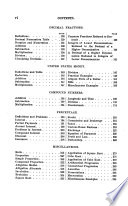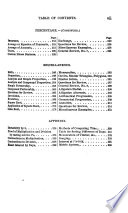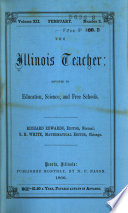 | John Daniel Runkle - Mathematics - 1860 - 460 pages
...County, Pa. 2. Reduction of Fractions to a Common Denominator. — After the pupil has thoroughly learned that multiplying or dividing both terms of a fraction by the same number does not change its value, he is then prepared to learn how to reduce fractions to a common denominator. The following process... | |
 | 1860 - 462 pages
...County, Pa. 2. Reduction of Fractions to a Common Denominator. — After the pupil has thoroughly learned that multiplying or dividing both terms of a fraction by the same number does not change its value, he is then prepared to learn how to reduce fractions to a common denominator. The following process... | |
 | James Stewart Eaton - 1862 - 320 pages
...both numerator and denominator of this complex fraction, -, by 7, we 7 1 obtain 1-; but multiplying both terms of a fraction by the same number does not change its value (Art. 84, a), .-. -= £; 5. e. T the reciprocal of ^ is £ ; and, generally, the reciprocal of any... | |
 | Alexander Duncan (Educator) - Examinations - 1863 - 168 pages
...21. What is the effect of dividing the numerator of a fraction? ART. 113. 23. What is the effect of multiplying or dividing both terms of a fraction by the same number? ART. 116, 117. 24. Prove that these proposition* are true. АRT. 117, Dem. 1-6. 25. How many and what... | |
 | Edward Brooks - Arithmetic - 1863 - 350 pages
...ij- Therefore, oto. SOLUTION 2n. — Since, by Prop. V., multiplying both numerator and denominator of a fraction by the same number does not change its value, we multiply both terms by the number which will give the required denominator, which we find to be... | |
 | James Stewart Eaton - Arithmetic - 1864 - 322 pages
...multiplying both numerator and denominator of this complex fraction, -, by 7, we obtain £ ; but multiplying both terms of a fraction by the same number does not change its value (Art. 84, a), .*. - = £; ie the reciprocal of £ is J ; and, generally, the reciprocal of any fraction... | |
 | George Augustus Walton - Arithmetic - 1864 - 364 pages
...in the form of a fraction, the dividend being the numerator, and the divisor the denominator ; since dividing both terms of a fraction by the same number does not alter its value, it follows, that we may strike out, or cancel, any factors common to the dividend... | |
 | George Augustus Walton - Arithmetic - 1864 - 376 pages
...in the form of a fraction, the dividend being the numerator, and the divisor the denominator ; since dividing both terms of a fraction by the same number does not alter its value, it follows, that we may strike out, or cancel, any factors common to the dividend... | |
 | Education - 1866 - 538 pages
...of Chain Fractions. The usual rule for the reduction of fractions is based upon the principle that dividing both terms of a fraction by the same number does not alter its value. Another mode of procedure, when the terms, without being prime numbers, are prime... | |
 | Stoddard A. Felter - Arithmetic - 1868 - 238 pages
...NOTE. — Change § and | to the most convenient denomination.* • Twelfths. ILLUSTRATION. FORM. — Multiplying or dividing both terms of a fraction by the same number does not change its value ; hence if the terms of f are multiplied by 4, and the terms of | are multiplied by 3, the resulting... | |
| |